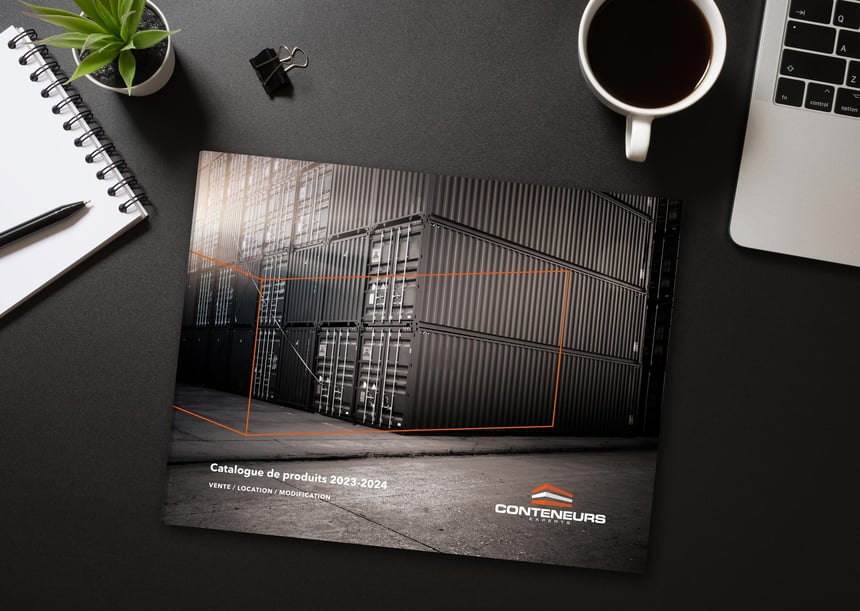Innovative, eco-friendly and versatile, the concept of transforming shipping containers into functional spaces has grown…

History Of Shipping Containers
History of shipping containers – every shipping container has a story. Though shipping containers are relatively simple in shape and serve a multitude of uses around the world, it took quite a bit of engineering and “thinking outside of the box”, if you will, for shipping containers to become the useful tool they are today.
History of shipping containers – humble beginnings
By the 1830’s, various countries in Europe used large shipping boxes to transfer goods from one place to another. A notable nation was the UK who used “Simple rectangular timber boxes, four to a truck, they were used to convey coal from the Lancashire collieries to Liverpool, where they were transferred to horse-drawn carts by crane.” At the time, these large shipping boxes were made of a large steel frame with wooden doors, roof and wall panels.
In 1933, the Bureau International des Containers et du Transport Intermodal (B.I.C.) established the standardized international shipping containers. By the time World war Two began, the use of standardized steel shipping containers began when commercial shipping operators and the US military started developing such units.
From 1949 onwards, American engineer Keith Tantlinger repeatedly contributed to the development of containers, as well as their handling and transportation equipment. In 1949, Tantlinger modified the design of steel shipping containers so that they could be stacked on top of another along with increasing the size of intermodal containers to hold and support bigger loads.
As the industry continued to grow and evolve, so did the need for standardization and safety regulations to be implemented. Between 1968 and 1970 the ISO standards for containers were published by the International Maritime Organization. These standards allow for more consistent loading, transporting, and unloading of goods in ports throughout the world, thus saving time and resources.
Shipping containers in today’s world
Thanks to globalization, world trade is a constantly evolving and growing organism of commerce. In 2012, there were about 20.5 million shipping containers in the world of varying types and size to suit the various needs of shipping companies. Containers have largely supplanted the traditional bulk cargo – in 2010 containers accounted for 60% of the world’s seaborne trade, which was worth more than 4 trillion US dollars.
Types of containers
Seeing as there is no limit as to what needs to be shipped from one side of the world to another, companies have engineered different types of shipping containers to fulfill different orders. Here are some other types of shipping cargo containers that exist alongside the standard rectangular shipping container.
- General-purpose Shipping Containers (Dry Vans): boxes, cartons, cases, sacks, bales, pallets, drums, etc.
- Rolling-Floor Containers: For difficult-to-handle cargo
- Garmentainers: For shipping garments on hangers (GOH)[
- Ventilated containers: For instance for organic products requiring ventilation
- Temperature controlled Containers: For insulated, refrigerated, and/or heated containers, for perishable goods
- Tank Containers: For liquids or gases.
- Bulk containers (sometimes bulktainers), either closed models with roof-lids, or hard or soft open-top units: For top loading, for instance for bulk minerals.
- Open-top and open-side containers: For easy loading of heavy machinery or oversize pallets. Open sides are also used for ventilating hardy perishables like apples or potatoes.
- Flat-rack and Bolster containers: For barrels, drums, crates, and any heavy or bulky out-of-gauge cargo, like machinery, semi-finished goods or processed timber.
World Trade
Though there is a multitude of shipping companies present around the world, the three most notable companies are: CMA CGM S.A., Mediterranean Shipping Company S.A., A.P. Moller – Maersk Group.
CMA CGM S.A.
CMA CGM S.A. is a transportation container and shipping company based in Marseilles in France which also has a North American headquarters located in Norfolk, Virginia. Founded in 1851, the company now has 200 routes operating in 400 ports in around 150 different countries.
Mediterranean Shipping Company S.A.
The Mediterranean Shipping Company S.A. is a shipping line based in Geneva in Switzerland. Established in 1970, the company has a presence in all the major ports around the world. Mediterranean Shipping Company S.A. currently operates 474 vessels with a total combined capacity of 2.3 million TEU and has been named Shipping Line of the Year six times in a span of 11 years starting from 1996.
A.P. Moller – Maersk Group
A.P. Moller – Maersk Group is a conglomerate based in Copenhagen in Denmark that was established in 1904. Since 1996, A.P. Moller – Maersk Group was considered as the largest container ship operator and supply vessel operator in the world. They operate 600 vessels one of them being the Emma Maersk, considered as the largest container ship in the world!
History of shipping containers – Moving forward
What has contributed to the success of shipping containers would be their standardization and origination worldwide. Due to their conventional shape, size and engineering they have become the ideal transport tool. Weather by land, sea or air, you can count on seamless transfer of goods to be delivered efficiently and safely to where they need to be.
Modified containers
In recent years, shipping containers have been used for more than just transporting goods from one location to another. Individuals have been using modified shipping containers to build pop-up restaurants, concert stages even homes! The possibilities are endless. You simply have to think outside the box (the shipping container box that is).
At Conterm, we sell and rent out standardized metal containers varying from 10 feet to 40 feet in length. We invite you to learn more about various shipping containers specifications and dimensions.
If you have any questions about metal shipping containers, we invite you to contact us today. It will be our pleasure to discuss your container solutions needs and requirements.
Sources
- https://www.carucontainers.com
- https://www.researchgate.net/publication/270794211_czechoslovak_activity_to_prepare_european_norms_for_containers_before_the_second_world_war
- https://web.archive.org/web/20150720104152/https://www.transportation.army.mil/museum/transportation%20museum/CONEX.htm
- https://www.therichest.com/rich-list/the-biggest/the-biggest-shipping-companies-in-the-world/







